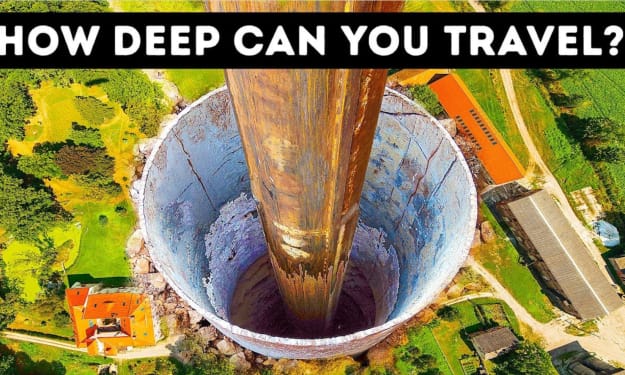Journey to the Edge of the Universe: Exploring Boundaries and Parallel Universes
There is a wall at the end of the Universe.

Title: Journey to the Edge of the Universe: Exploring Boundaries and Parallel Universes
A Grand Voyage to the Stars:
A large spacecraft capable of traveling 100 times faster than the speed of light embarks on an extraordinary journey. The engines ignite as we surpass the Earth's atmosphere, ascending to the Carmen line, 62 miles above sea level. The hyper-drives activate, propelling us towards the outer reaches of our solar system, passing by celestial bodies like Mars, Jupiter, Saturn, Uranus, and Neptune. Our journey spans 100 astronomical units, reaching the heliosphere, the boundary marking the edge of our solar system.
The Heliosphere and the Heliopause:
As we venture into the heliosphere, the solar wind's speed diminishes significantly. From a blazing 620,000 miles per hour, it gradually decelerates to the speed of sound. The heliopause, the next frontier, greets us as the solar wind almost ceases entirely. At this juncture, our ship encounters a bow wave—a testament to the interstellar wind colliding with the edge of our solar system. Crossing this threshold, we find ourselves in the intergalactic void, a space devoid of any celestial influence.
Voyager Probes and the Interstellar Void:
Voyager 1 and Voyager 2, the pioneering artificial objects, were the first to traverse this uncharted territory. Voyager 1 crossed the boundary in 2004, followed by Voyager 2 in 2007. These space probes revealed the non-spherical shape of the heliosphere, with its southern boundary situated closer to the Sun than the northern boundary. Beyond this point lies the enigmatic Oort Cloud, a collection of asteroids surrounding our world. Although sparse, these asteroids are believed to be the source of comets and meteorites that occasionally reach Earth.
Journeying through the Milky Way:
Drifting through the vast darkness, we navigate the expanse of the Milky Way. The conventional time it would take to traverse this 106,000-light-year-wide galaxy would be billions of years. However, with our ship's advanced capabilities, we swiftly pass stars and planets, reminiscent of a high-speed racetrack. Within minutes, we approach the outer edges of our galaxy, where interstellar wind dissipates, leaving only distant points of light—gigantic galaxies.
Unveiling the Observable Universe:
To navigate our way to the edge of the entire observable universe, we consult a map. We find ourselves near the Milky Way galaxy, a constituent of the Laniakea Supercluster. However, even this vast structure is comparable to a mere street in a bustling city when we zoom out further, revealing the Hydra-Centaurus Supercluster, housing thousands of galaxies. Continuing the zoom, we discover the entirety of our observable universe, a tapestry of countless galaxies and stars, stretching as far as the eye can perceive.
The Existence of Parallel Universes:
Our perception of reality may be just one of many parallel universes. Scientists speculate that these universes, akin to bubbles, were born during the Big Bang, each containing its own galaxies and nebulae. Every decision made in our lives would have different consequences in a parallel universe, resulting in infinite potential realities. These universes may exist in harmony, but they could also collide. Evidence of such collisions lies in the vast expanse known as the Uranus Super void, spanning 1 billion light-years—a possible remnant of a previous universe collision.
Seeking the Edge of the Universe:
Searching for the boundary of our universe proves challenging due to our limited three-dimensional perspective. Viewing the universe through the lens of four-dimensional space might provide fresh insights. Similar to a two-dimensional square appearing as a three-dimensional cube when depth is added, our universe's boundaries may transform in four-dimensional space. The quest to find the edge of our universe may require venturing through a black hole—a mysterious object that warps space and time.
Black Holes and the Possibility of White Holes:
Black holes, known for their immense gravitational pull, could hold the key to traversing into other universes. Speculations exist regarding the existence of white holes, which are the antithesis of black holes. While no concrete data is available on white holes, general relativity theory supports their existence. Some theories propose that black holes could serve as gateways to other universes, enabling passage through a white hole's event horizon, effectively bypassing the boundaries of our universe.
The Birth and Destruction of White Holes:
In 2006, scientists observed a unique burst of energy approximately 1.6 billion light-years away from Earth. This event, resembling the birth of a white hole, was dubbed the "little bang." Though short-lived, it raised the possibility of white holes' existence. Like the birth of our universe through the Big Bang, this event hinted at the potential existence of white holes as gateways to other realms. Exploring the mysteries of black and white holes offers tantalizing clues about the boundaries of our universe and the existence of parallel realities.
The Collision of Universes:
Imagine observing the collision of two vast bubbles, representing two universes, hurtling toward one another. The gravitational forces between the bubbles draw them closer, distorting space-time. As the universes collide, immense energy is released, potentially causing catastrophic explosions. The aftermath of such a collision may yield the formation of voids, like the Uranus Supervoid, as a residue from the collision with the other universe. These collisions offer glimpses into the vastness and complexity of the cosmic tapestry, unveiling the boundless potential of parallel universes.
About the Creator
Joel Edward Gblee
Joel is an enigmatic wordsmith and a storyteller whose imagination knows no bounds. With his hands dancing across the keyboard, he weaves captivating tales that transport readers to exhilarating realms and leave them yearning for more.






Comments
There are no comments for this story
Be the first to respond and start the conversation.